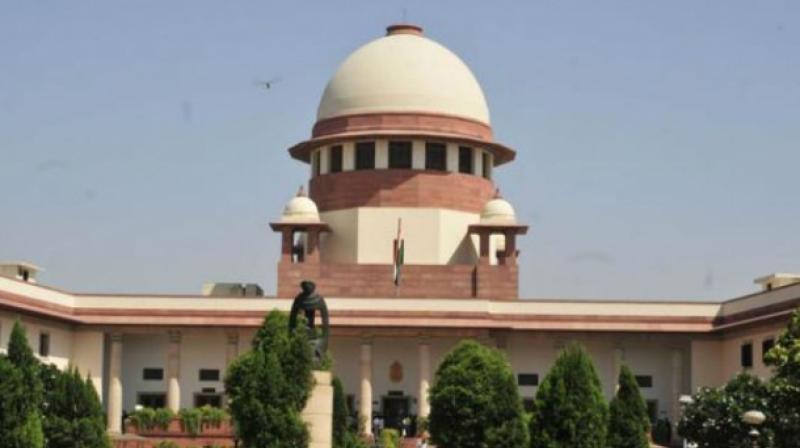Supreme Court in a muddle

In the musical chairs played by CJI and Justice Chelameshwar, the Supreme Court stood exposed not for what it did, but how it did what it did. more importantly, the real issue seems to have faded in all the noise.
Whether the Chief Justice of India (CJI) and J. Chelameshwar playing musical chairs in their respective role of listing an urgent case was right or not is unimportant, even if it precipitated news of unlimited proportions. A cursory look at the Supreme Court Rules 2013, show the Chief Justice has been assigned many administrative functions. One of which is the boring task of hearing “mentions” by lawyers on getting their cases listed earlier. When the Chief Justice sits in a Constitution bench of five or more, this task is assigned to Judge No. 2 so that the Constitution bench can be heard without interruption from 10.30 am. Judge No. 2 becomes the de jure mentioning judge with unrestricted powers. The Chief remains the Chief. It is no insult to the Chief for No. 2 to list a case because he attaches immediacy to it. Was it forum shopping? Yes. But as a tactic not a sin. These are not acts of rebellion, only differences in judgment. But the CJI broke the Constitution bench, issued a letter to stop No. 2 who stuck to his order. Then there were three benches: the one to hear Prashant Bhushan’s case, the second to hear Kamini Jaiswal’s case and the third one to bury the two. Then the unprecedented power of the CJI overrode tradition. Hereafter, No. 2 was assigned no mentioning cases. For the first time in 67 years the Constitution bench sat at 11.30 so that the CJI could hear the mentioning not Court 2.
What name can we give this: An expensive farce? What is more farcical is that when the Chief exchanged words with Bhushan, the latter was threatened with contempt because he had accused the Chief Justice of corruption which he had not. In cases like this, the court is full. Except that chairs are not used for weaponry, it was as chaotic as an indisciplined legislature. Voices. More voices. The attorney-general supported the contempt charge. The others went into chorus being arbitrarily permitted to sing the same song. It was a bit like Shakespeare’s Caesar where a man says, “but I am Cinna the poet and not the conspirator”. The crowd calls out “Kill him for his bad verses”. More chaos. The proceedings ended without dignity. The Supreme Court, that great mountain of calm and virtue, stood exposed not for what it did but how it did what it did.
The real controversy
In this, the real controversy has somehow disappeared. This is a case in which there was an FIR dated September 19, 2017 Book No. 1064 Sr. No. 11 Entry 5. The offence was conspiracy to corrupt, registered by officer Rao, superintendent of police, CBI, AC III based on the information that B.P. Yadav and Palash Yadav of the Prasad Institute of Medical Sciences, Lucknow were in criminal conspiracy with I.M. Quddusi, retired Justice of the high court of Orissa, Bhawana Pandey and Sudhir Giri to corrupt a result of the Supreme Court. Six persons were named and the rest were “unknown public servants and private persons”.
This is serious business. The Chief Justice of India was not mentioned but he allegedly had passed the order in this Prasad case. There was nothing corrupt about the order. It was the usual order of no medical admissions in 2017-18 and no cashing of bank guarantee. But there is a difference. This was not a rumour. It was not some lawyer telling a client: Tumhara kaam hogaya (Your work is done) even though no exchange took place. This was an FIR by the CBI in a live case in the Supreme Court. Rumours registered are a dozen but this was an indictment into the independent judicial decision of the Supreme Court in its judicial capacity by supposedly the most powerful investigating agency in India.
At this point my mind travels away from the Supreme Court to the FIR itself by superintendent R. Gopala Krishna Rao of the CBI proclaiming “A reliable information has been received” that Sarvashri Yadav and Yadav are corrupting the Supreme Court through public officials and private persons. The public is entitled to know what the “reliable information” was. (Obviously enough for the CBI officer of rank to believe.)
Yet we are compelled to carry our queries further. Did the new director of CBI know? Or were his investigating skills (as some suggest) not equal to the task? The new CBI director may not be the most important decision-maker in the CBI. But was it some other more influential officer behind the filing of this FIR? The CBI’s decisions also flow from political connections. Was this a straightforward case? Or was it a conspiracy to direct the FIR in a particular direction? This was a much too important decision to leave in the hands of the officer in-charge of the police station. Why was it taken in the form in which it was implicating a retired Orissa judge at a time when the CJI happened to come from Orissa; and that too concerning a college in far away UP at a time when cases were being decided by the dozen in which the same impregnable Supreme Court order was passed.
Not just the Supreme Court
This is not just about the Supreme Court’s antics on who should hear mentioning in the morning? Or about Judge No. 1 not trusting Judge No. 2? It is certainly about the creeping disease of shouting, overcoming discourse in that most hallowed institution. But the real unanswered questions are about the FIR? From whence and why did it come? If not entirely bonafide then who sponsored it? And what will happen to it now?
The writer is a senior advocate and a constitutional expert.

